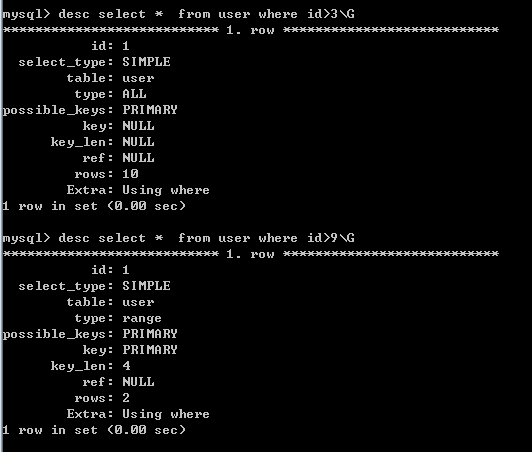1. 全值匹配
条件字段使用“=”

2. 范围匹配(<= >= between and)
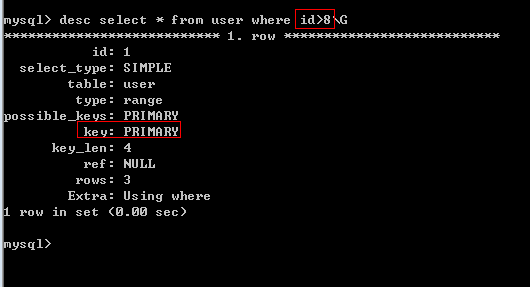

3. 独立的列
是指索引列不能是表达式的一部分,也不能是函数的参数
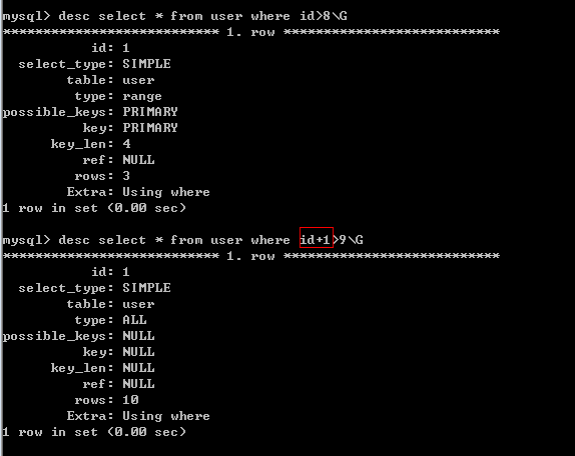
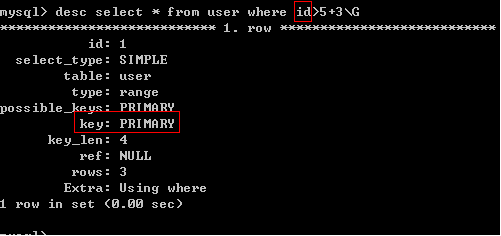
注意:要求索引的列必须是独立的一列才能用到索引。
4. 左值匹配
在使用like(模糊匹配)的时候,在左边没有通配符的情况下,才可以使用索引。
在mysql里,以%开头的like查询,用不到索引。
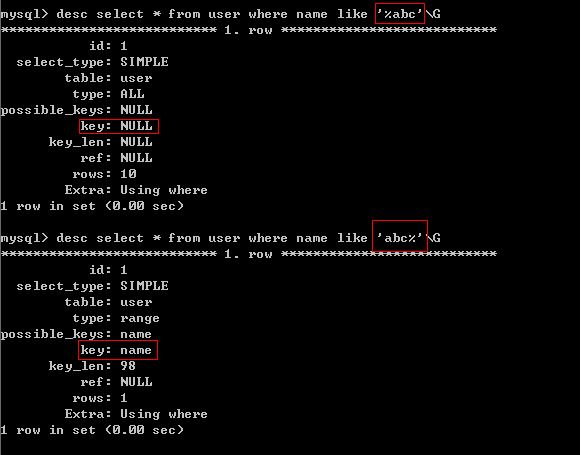
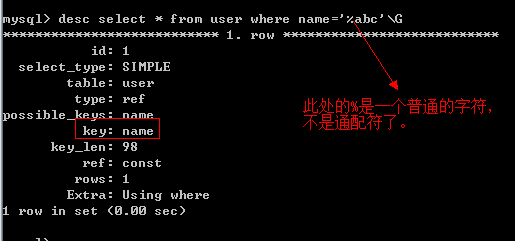
比如:根据歌词搜索歌曲的名称,根据剧情搜索电影的名称。sphinx来完成。
5. or运算都有索引
如果出现OR(或者)运算,要求所有参与运算的字段都存在索引,才会使用到索引。
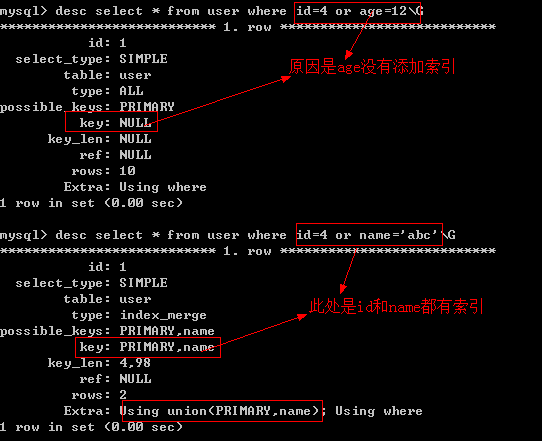
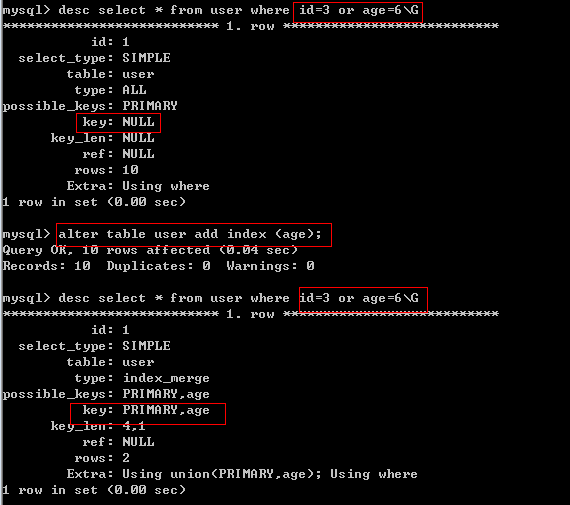
6. 多列索引
对于创建的多列(复合)索引,只要查询条件使用了最左边的列,索引一般就会被使用。

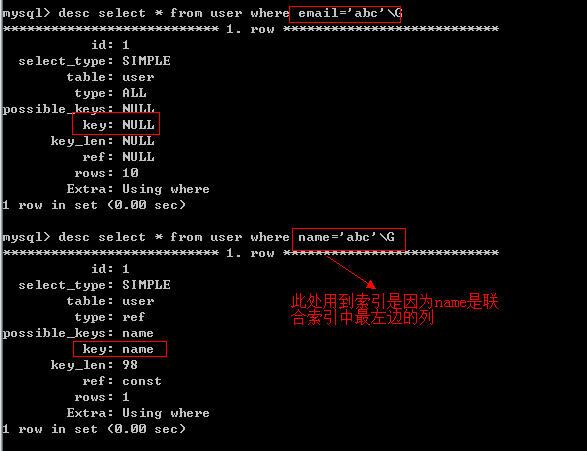
因为联合索引是需要按顺序执行的,比如c1234组合索引,要想在c2上使用索引,必须先在c1上使用索引,要想在c3上使用索引,必须先在c2上使用索引,依此。
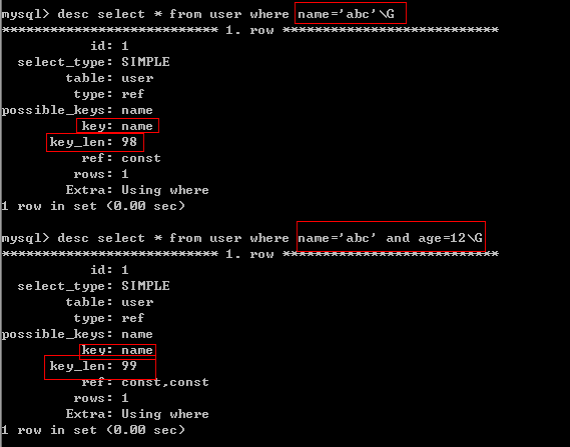
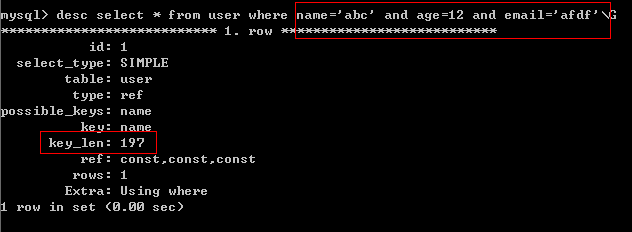
假设某个表有一个联合索引(c1,c2,c3,c4)
A where c1=x and c2=x and c4>x and c3=x B where c1=x and c2=x and c4=x order by c3 C where c1=x and c4= x group by c3,c2 D where c1=x and c5=x order by c2,c3 E where c1=x and c2=x and c5=? order by c2,c3
分析下面A-E能否可以使用索引,该表插入的数据:
create table t4 ( c1 tinyint(1) not null default 0, c2 tinyint(1) not null default 0, c3 tinyint(1) not null default 0, c4 tinyint(1) not null default 0, c5 tinyint(1) not null default 0, index c1234(c1,c2,c3,c4) ); insert into t4 values (1,3,5,6,7),(2,3,9,8,3),(4,3,2,7,5);
分析:对name和age和email分别建立独立索引:最终只能使用到一个索引。
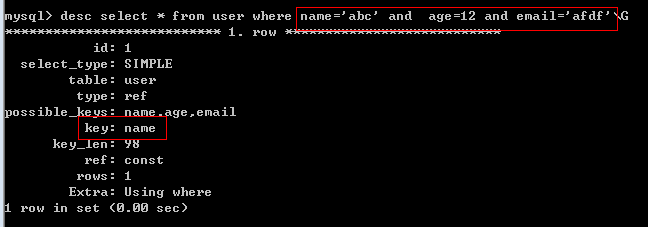

如果对name和age和email 建立了联合索引,在按照建立索引的顺序使用时,都用到了索引。
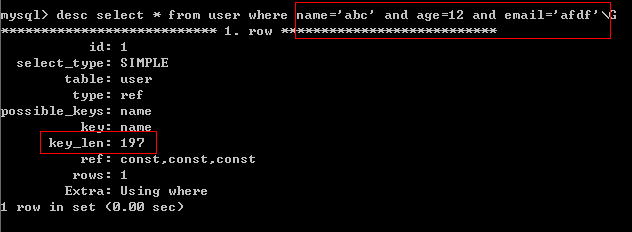
结论:如果有多个条件经常出现在where条件中,则可以对条件字段建立联合索引。
应用:比如goods表里面,cat_id和价格,就可以建立一个联合索引。
7. 当取出的数据量超过表中数据的20%,优化器就不会使用索引,而是全表扫描。
